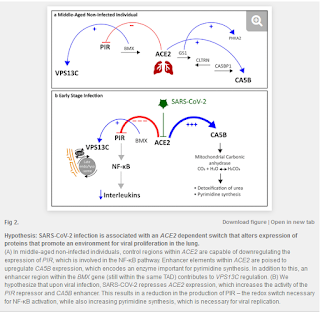Oral bioavailability of ~ 30 kDa proteins
While most proteins are degraded during digestion, some fibrinolytic enzymes and prions can be resistant to digestion and there is evidence for their intestinal absorption.
Nattokinase has been reported to be orally bioavailable [1], though some have told me they discount the study by Ero et al. (2013), citing that it was funded by a supplement maker that sells nattokinase (I can't verify the sponsorship of the study since the article is paywalled). Of course, clinical trials for most new prescription drugs sold in the United States are funded by the pharmaceutical companies that make them.
"Gastrointestinal absorption of macromolecules, such as, proteins can be explained by three mechanisms as follows [16,17]. First, proteins are absorbed via receptor mediated endocytosis are as some growth factors. Second, proteins are absorbed by pinocytic vesicles, which are formed by the brush border membrane of the intestine, and normally fuse with lysosomes to form phagolysomes. Only if a protein escapes hydrolysis can it conceivably enter the extracellular space and reach the blood stream. Third, protein absorption by trans-epithelial transport via the M cells of Peyer's patches could be involved. Foreign proteins, such as, lumbrokinase are unlikely to be absorbed via receptor-mediated endocytosis, and thus, the intestinal absorption of lumbrokinase is more likely to involve the second and third mechanisms. Because it is a complex of strong serine proteases, lumbrokinase is resistant to degradation by some cellular enzymes, and thus, it could be transferred intact and across the cell membrane by pinocytic vesicles or epithelial cells (M cells)."
Unfortunately, prions are another class of proteins of average (~ 30 kDa) size that are orally available; this excerpt is from Urayama et al. (2016) [3]:
{ PrPSc = scrapie isoform of the prion protein }
" PrPSc is absorbed across the intestinal epithelium mediated through several mechanisms. Studies in Caco-2 cellular models of the intestinal barrier have shown that PrPSc can cross the barrier by endocytosis upon interaction with the laminin receptor10. On the other hand, Heppner and colleagues found that M cells mediate transcytosis of prions across the epithelial cell monolayers11. Mishra et al. showed that prion-ferritin complex is transcytosed in Caco-2 cell monolayers12. Kujala et al. found that the absorption of PrPSc through enteric lymphatic tissues was independent from constitutive expression of PrPC 13."
" PrPSc is absorbed across the intestinal epithelium mediated through several mechanisms. Studies in Caco-2 cellular models of the intestinal barrier have shown that PrPSc can cross the barrier by endocytosis upon interaction with the laminin receptor10. On the other hand, Heppner and colleagues found that M cells mediate transcytosis of prions across the epithelial cell monolayers11. Mishra et al. showed that prion-ferritin complex is transcytosed in Caco-2 cell monolayers12. Kujala et al. found that the absorption of PrPSc through enteric lymphatic tissues was independent from constitutive expression of PrPC 13."
Here's a nice video animation showing M cells in action:
___
1 -
Ero, Michael Penfield, Connie M. Ng, Tamara Mihailovski, Nathaniel R. Harvey, and Brad Howard Lewis. “A Pilot Study on the Serum Pharmacokinetics of Nattokinase in Humans Following a Single, Oral, Daily Dose.” Alternative Therapies in Health and Medicine 19, no. 3 (June 2013): 16–19.
2 -
Yan, Xiang Mei, Chung-Hyo Kim, Chul Kyu Lee, Jang Sik Shin, Il Hwan Cho,
and Uy Dong Sohn. “Intestinal Absorption of Fibrinolytic and
Proteolytic Lumbrokinase Extracted from Earthworm, Eisenia Andrei.” The
Korean Journal of Physiology & Pharmacology : Official Journal of
the Korean Physiological Society and the Korean Society of Pharmacology 14, no. 2 (April 2010): 71–75. https://doi.org/10.4196/kjpp.2010.14.2.71.
3 -
Urayama, Akihiko, Luis Concha-Marambio, Uffaf Khan, Javiera
Bravo-Alegria, Vineetkumar Kharat, and Claudio Soto. “Prions Efficiently
Cross the Intestinal Barrier after Oral Administration: Study of the
Bioavailability, and Cellular and Tissue Distribution in Vivo.” Scientific Reports 6 (30 2016): 32338. https://doi.org/10.1038/srep32338.

Comments
Post a Comment